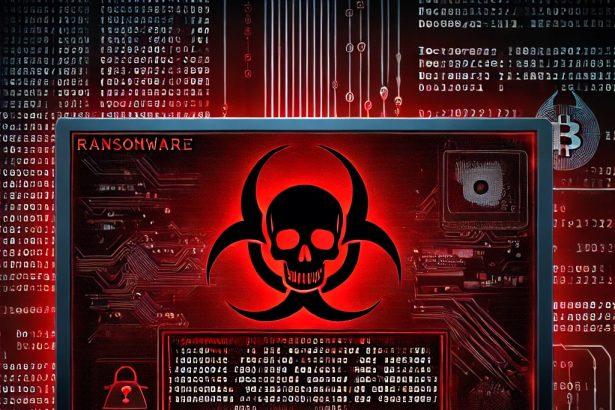RestoreMyData ransomware is a dangerous file-locking virus that encrypts users’ data and demands payment in Bitcoin to restore access. It appends the .restoremydata extension to encrypted files and leaves a ransom note named Restore_My_Data.txt, warning victims not to rename files or try alternative recovery tools.
Threat Summary
| Threat Type | Ransomware |
|---|---|
| Encrypted File Extension | .restoremydata |
| Ransom Note Filename | Restore_My_Data.txt |
| Email Contact | N/A – Bitcoin wallet only |
| Detection Names | Trojan.Encoder.32533, Win32/Filecoder.RestoreMyData.A, Ransom:Win32/StopCrypt |
| Symptoms | Files renamed with .restoremydata, ransom note on desktop, files inaccessible |
| Damage + Distribution Methods | Encrypts files; distributed via malicious email attachments, cracked software, fake updates |
| Danger Level | 🔴 High |
How Did I Get Infected With RestoreMyData Ransomware?
RestoreMyData ransomware typically spreads via classic malware delivery methods:
- Malicious email attachments disguised as invoices, resumes, or urgent documents.
- Fake software cracks or keygens downloaded from shady torrent or warez sites.
- Drive-by downloads from compromised websites or fake update prompts.
- Trojan droppers that silently install the ransomware in the background.
Once the ransomware payload is executed, it starts encrypting local files almost instantly—leaving no time for manual interruption.
What RestoreMyData Ransomware Does to Your Files
Once active, RestoreMyData scans your system for target file types—documents, photos, archives, databases—and encrypts them using a strong algorithm. After encryption:
- The file extension
.restoremydatais added to each file.- Example:
report.pdfbecomesreport.pdf.restoremydata
- Example:
- A ransom note titled
Restore_My_Data.txtis dropped in each affected folder. - The note contains a Bitcoin wallet address and instructions to pay a ransom for decryption software.
There is no unique victim ID or contact email provided, which suggests this may be a variant of STOP/Djvu ransomware—relying instead on generic wallets and precompiled decryptors.
Should You Be Worried About RestoreMyData?
Yes. RestoreMyData ransomware is highly destructive and:
- Removes your ability to access personal files.
- Offers no verification mechanism or communication channel, meaning you’re taking a risk even if you consider paying.
- May have been accompanied by other malware, like password stealers or Trojans.
There is currently no public decryptor for the latest RestoreMyData variant, especially if it used a unique online key. However, if the infection used an offline key, tools like Emsisoft Decryptor for STOP/Djvu may work in some cases.
Ransom Note Dropped by RestoreMyData
Here’s what the Restore_My_Data.txt note typically says:
Your files are encrypted!
All your important files have been encrypted.
To restore your files, you must pay for decryption.
Send exactly $980 worth of Bitcoin to the following wallet:
[Bitcoin address]
After payment, your files will be restored.
This note lacks any verification options or email contacts, which further reduces the credibility of recovering files after payment. Do not trust the ransom demand.
Manual Ransomware Removal Guide
Warning: Manual removal is complex and risky. If not done correctly, it can lead to data loss or incomplete removal of ransomware. Only follow this method if you are an advanced user. If unsure, proceed with Method 2 (SpyHunter Removal Guide).
Step 1: Disconnect from the Internet
- Unplug your Ethernet cable or disconnect Wi-Fi immediately to prevent further communication with the ransomware’s command and control (C2) servers.
Step 2: Boot into Safe Mode
For Windows Users:
- For Windows 10, 11:
- Press Windows + R, type
msconfig, and hit Enter. - Go to the Boot tab.
- Check Safe boot and select Network.
- Click Apply and OK, then restart your PC.
- Press Windows + R, type
- For Windows 7, 8:
- Restart your PC and press F8 repeatedly before Windows loads.
- Select Safe Mode with Networking and press Enter.
For Mac Users:
- Restart your Mac and immediately press and hold the Shift key.
- Release the key once you see the Apple logo.
- Your Mac will start in Safe Mode.
Step 3: Locate and Terminate Malicious Processes
For Windows Users:
- Press Ctrl + Shift + Esc to open Task Manager.
- Look for suspicious processes (e.g., unknown names, high CPU usage, or random letters).
- Right-click on the process and select End Task.
For Mac Users:
- Open Activity Monitor (Finder > Applications > Utilities > Activity Monitor).
- Look for unusual processes.
- Select the process and click Force Quit.
Step 4: Delete Malicious Files
For Windows Users:
- Press Windows + R, type
%temp%, and hit Enter. - Delete all files in the Temp folder.
- Navigate to:
C:\Users\[Your Username]\AppData\RoamingC:\Users\[Your Username]\AppData\LocalC:\Windows\System32
- Look for suspicious files related to the ransomware (random file names, recently modified) and delete them.
For Mac Users:
- Open Finder and go to Go > Go to Folder.
- Type
~/Library/Application Supportand delete suspicious folders. - Navigate to
~/Library/LaunchAgentsand remove unknown.plistfiles.
Step 5: Remove Ransomware from Registry or System Settings
For Windows Users:
Warning: Incorrect changes in the Registry Editor can damage your system. Proceed with caution.
- Press Windows + R, type
regedit, and hit Enter. - Navigate to:
HKEY_CURRENT_USER\SoftwareHKEY_LOCAL_MACHINE\Software
- Look for unfamiliar folders with random characters or ransomware-related names.
- Right-click and select Delete.
For Mac Users:
- Go to System Preferences > Users & Groups.
- Click on Login Items and remove any suspicious startup items.
- Navigate to
~/Library/Preferencesand remove malicious.plistfiles.
Step 6: Restore System Using System Restore (Windows) or Time Machine (Mac)
For Windows Users:
- Press Windows + R, type
rstrui, and hit Enter. - Click Next, choose a restore point before the infection, and follow the prompts to restore your system.
For Mac Users:
- Restart your Mac and hold Command + R to enter macOS Utilities.
- Select Restore from Time Machine Backup.
- Choose a backup prior to the ransomware infection and restore your system.
Step 7: Use a Decryption Tool (If Available)
- Visit No More Ransom (www.nomoreransom.org) and check if a decryption tool is available for your ransomware variant.
Step 8: Recover Files Using Backup
- If you have backups on an external drive or cloud storage, restore your files.
Automatic Ransomware Removal Using SpyHunter
If manual removal seems too risky or complicated, using a reliable anti-malware tool like SpyHunter is the best alternative.
Step 1: Download SpyHunter
Download SpyHunter from the official link: Download SpyHunter
Or follow the official installation instructions here:
SpyHunter Download Instructions
Step 2: Install SpyHunter
- Open the downloaded file (
SpyHunter-Installer.exe). - Follow the on-screen prompts to install the program.
- Once installed, launch SpyHunter.
Step 3: Perform a Full System Scan
- Click on Start Scan Now.
- SpyHunter will scan for ransomware and other malware.
- Wait for the scan to complete.
Step 4: Remove Detected Threats
- After the scan, SpyHunter will list all detected threats.
- Click Fix Threats to remove the ransomware.
Step 5: Use SpyHunter’s Malware HelpDesk (If Needed)
If you are dealing with a stubborn ransomware variant, SpyHunter’s Malware HelpDesk provides custom fixes to remove advanced threats.
Step 6: Restore Your Files
If your files are encrypted:
- Try No More Ransom (www.nomoreransom.org) for decryption tools.
- Restore from cloud storage or external backups.
Preventing Future Ransomware Attacks
- Keep backups on an external hard drive or cloud storage.
- Use SpyHunter to detect threats before they infect your system.
- Enable Windows Defender or a trusted antivirus program.
- Avoid suspicious emails, attachments, and links.
- Update Windows, macOS & software regularly.
Conclusion
RestoreMyData ransomware is a serious threat that encrypts your files and holds them hostage. It uses classic infection methods and leaves no reliable way to recover your data without backups. Removal should be handled immediately using a reputable anti-malware tool, and you should never pay the ransom, as it guarantees nothing.
🔧 Remove the ransomware, then try data recovery options:
- Use SpyHunter to scan and remove all components.
- Use Emsisoft STOP/Djvu decryptor if you suspect an offline key was used.
- Recover from backups, if available.
- Try data recovery software for recently encrypted files.




